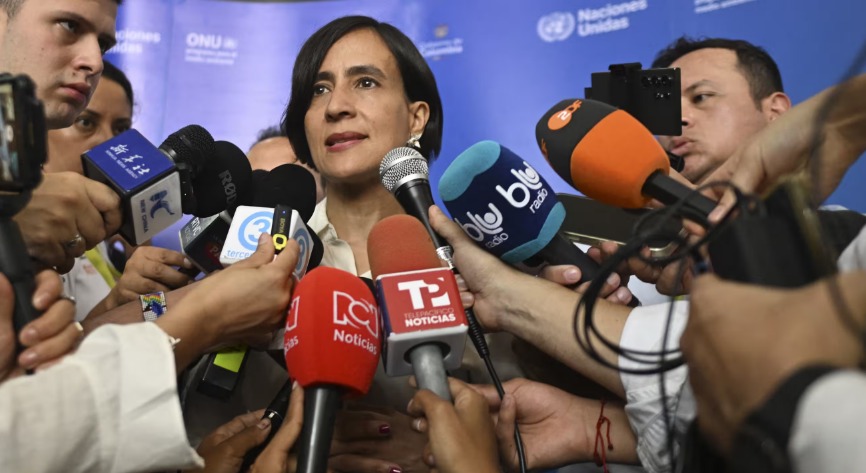A significant portion of the event, which began on Monday, is dedicated to the means to finance biodiversity protection in developing countries.
From forests to the abyss, including vast plains and wetlands, how can we better defend nature and its precious ecosystems? To tackle this global challenge, the 16th Conference of the Parties to the United Nations Convention on Biological Diversity (COP16) opened on Monday, October 21, in Cali, Colombia. Over ten days, the 196 member countries of the convention will attempt to protect what can still be saved during this crucial summit for the future of humanity, which depends on nature for everything it eats, drinks, and consumes. Therefore, even if we cannot talk to orangutans and zooplankton, it is important to understand what is being discussed in these talks. Franceinfo lists the terms that will be at the heart of the negotiations until November 1.
Megadiverse Countries
Around the world, some countries are richer in biodiversity than others. Developed in 1988 by American primatologist Russell Alan Mittermeier, the term “megadiverse countries” refers to a select group of states that together house two-thirds of life on Earth (fauna, flora, and microorganisms), thanks to their rich ecosystems (forests, rivers, mountains, coral reefs, estuaries, etc.) and a high number of endemic species. Colombia, the host of COP16, for example, is home to nearly 10% of global biodiversity, according to the country profile on the Convention on Biological Diversity (CBD) website, the institution that oversees the COPs on biodiversity. In this regard, the host country perfectly illustrates the stakes of protecting these riches.
The Los Nevados National Park in Murillo, Colombia, photographed on May 21, 2023, is known for its paramos. These high mountain ecosystems are home to many endemic species, many of which are threatened with extinction.
In a book published in 1997, the specialist listed 17: seven are found on the American continent (Brazil, Colombia, Ecuador, Mexico, Peru, Venezuela, and the United States), three in Africa (South Africa, Madagascar, and the Democratic Republic of the Congo), five in Asia (China, India, the Philippines, Malaysia, and Indonesia), and two in Oceania (Australia and Papua New Guinea). A handful of other countries, such as France (thanks to its overseas territories), are sometimes also cited as megadiverse countries.
The 23 Targets of the Kunming-Montreal Global Biodiversity Framework
This COP16 is the first meeting of the international community since the adoption in 2022 of a common roadmap to safeguard nature: the Kunming-Montreal Global Biodiversity Framework (GBF or KMGBF), named after the two co-hosting cities of COP15. This ambitious document outlines four main missions for 2050 and, importantly, 23 targets to be achieved by 2030.
It aims to protect 30% of the world’s land and oceans, restore 30% of degraded ecosystems, reduce pesticide use by half, and manage wild species sustainably for the benefit of populations. Other objectives include improving access to green spaces in cities and mobilizing $200 billion per year for nature. The complete list is available on the convention’s website.
The SPANBs
While the KMGBF and its 23 targets define the “what” of the international community’s biodiversity ambitions, the SPANBs answer the “how.” This cumbersome acronym stands for “strategies and national action plans for biodiversity,” which each of the 196 signatory countries must prepare. At the opening of COP16, the Convention on Biological Diversity had received only about thirty updated SPANBs aligned with the ambitions set in 2022 but expected to receive more during the summit.
Aware of the difficulty many countries face in developing a detailed strategy in such a short time, the CBD encouraged them to submit “national objectives” in the meantime. These documents outline the goals each government sets, without specifying how they plan to achieve them concretely. This first step aims to engage as many states as possible, given that, like the Paris Agreement on climate change, the Kunming-Montreal framework is not legally binding.
The GBFF
To implement the SPANBs, the treaty signed in Montreal calls on the parties, in its target 19, to mobilize “at least $200 billion per year by 2030,” from all sources combined, within a new fund. The Global Biodiversity Framework Fund (GBFF), created for this purpose, has received initial contributions from Canada, Germany, and the United Kingdom.
However, more than a year after its creation, Northern and Southern countries have struggled to agree on a key question: who should manage the fund? For now, the Global Environment Facility, a financial arm of the CBD, administers the GBFF. Yet, Southern countries, which will logically be the main beneficiaries of this new fund, believe this body is incapable of adequately fulfilling this mission and fear they will once again miss out on funding. They are thus calling for the establishment of a new independent organization, against the wishes of Northern countries.
Harmful Subsidies
Countries in the Southern hemisphere, particularly tropical nations, host the vast majority of species. They also have the least resources to invest in ecosystem protection, from which developed countries benefit greatly. To remedy this, the Montreal-Kunming text calls on governments to promote virtuous behavior among economic actors by eliminating, by 2030, $500 million in subsidies allocated to the sectors that are most harmful to the environment, leading to deforestation, overfishing, poaching, pollution, etc.
According to a report published in September by Earth Track, harmful environmental subsidies in 2024 amount to at least $2.6 trillion (equivalent to 2.5% of global GDP). “This represents about $800 billion more than two years ago, or about $570 billion more, excluding inflation,” the document pointed out.
Digital Sequence Information (DSI)
Biodiversity is everywhere, even in the cosmetics and medicines we consume every day. Recognizing that companies in developed countries primarily extract these biological resources from developing nations, the Nagoya Protocol established a framework in 2012 for both parties to sign a contract. The aim is to allow supplying countries to also benefit from the fruits of their natural riches. However, with the digitization of this genetic information, the system has largely failed, explained the Institute for Sustainable Development and International Relations (Iddri) in a blog post in 2023.
These billions of digitized genetic sequences, also called Digital Sequence Information (DSI), will therefore be the subject of numerous discussions, as countries see it as an additional means to raise funds. An agreement could be reached in Cali to establish “a global benefit-sharing mechanism” for the use of DSI. However, many questions remain: which companies will contribute? Will they do so voluntarily or mandatorily? How will the money be distributed?
Biodiversity Credits
The Kunming-Montreal Agreement encourages states to “promote (…) the payment for ecosystem services, green bonds, and biodiversity credits and compensations.” It thus aims to reward those who take care of ecosystems, such as farmers engaged in sustainable management, through a system known as “biodiversity credits” (or “nature credits”), inspired by “carbon credits.” The International Advisory Committee on Biodiversity Credits, supported by France and the United Kingdom, hopes to create national exchanges in pioneering countries.




